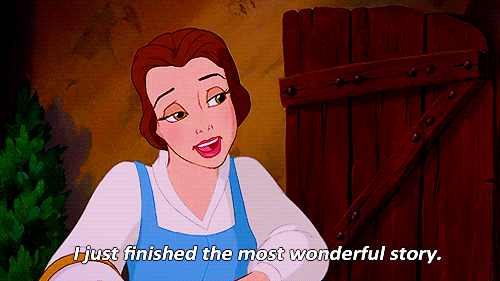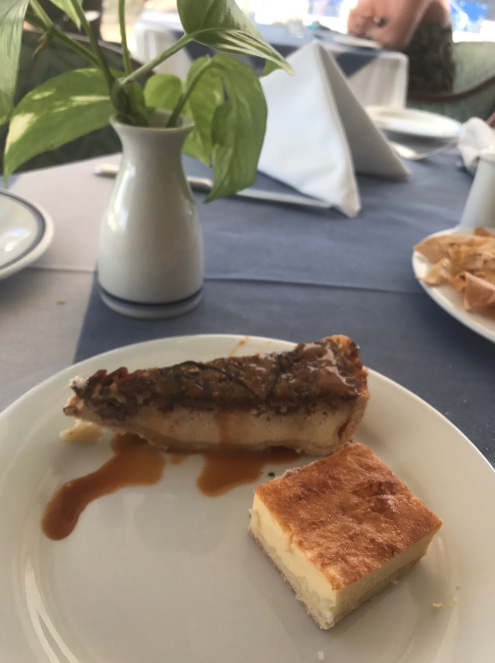This week got a number of new titles to the table along with a few old favourites. I find myself being drawn to the heavier end of games, while still needing to play the lighter games for other players.

Clank!: This week saw my third and fourth plays of Clank! You can read about my other plays here and here. I finally made it back out of the dungeon and won. I was last out but still managed to pull a victory. It highlights a beautiful part of this game, press your luck. Up to this point I had assumed that the press your luck element of Clank! was about how long you can survive against the dragon and how deep into the dungeon you can make it while still having time to get out. However I wonder if the real press your luck is actually how long you can afford to leave the other player in the dungeon after you leave. I found that I hadn’t managed to gain an amulet when my opponent was most of the way out. So I got to the closest, lower value, amulet as quickly as I could. However I was left in the dungeon for enough turns to keep getting more cards in to my deck which was enough to push my final points over the line.
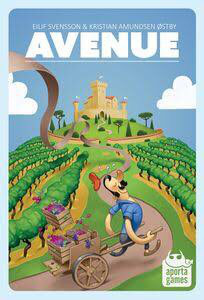
Avenue: This is a neat little filler that could realistically be played with a huge group without extending the play time. Everyone has an identical grid paper with a few letters and a lot of coloured grapes. The idea is that a player draws cards from a limited deck which has lines joining every combination of 2 card sides (vertical line, turn from bottom to right side etc). Everyone then draws the same “road” shape onto their paper. At a certain point everyone scores the number of grapes that have been joined to a previously stated letter. However each time you score, you must get a higher score than the round before or you get zero. At the end there are also extra points for any grapes that have a road to the two castles in opposing corners. It sounds simple enough but proves rather tricky on first play. I scored in the forties, the winner (who owned the game) was over one hundred.
Clans: In Clans your task is to move coloured huts from one region of a map to another. All huts in a region must be moved together. Each hut colour gets points when you are able to cause a hut, or group of huts, in a region to have no neighbours that they could be joined in to. Each player is a hut colour but the information is secret information, so everyone is trying to do actions which will allow their hut colour to score. I didn’t do well with this game but found it an interesting puzzle of a filler.
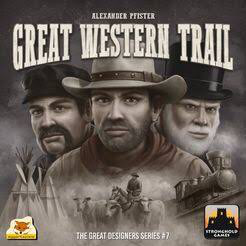
Great Western Trail: I have played Great Western Trail a few times this year, you can read about previous plays here. Or watch my videos, Gamesplained or Gamesplayed to get a feel for the rules. I didn’t win, which I’m happy with as I don’t play games to win, I play for the experience of each game. What I was able to witness was a player who had a plan and followed through. I saw the necessity to use buildings and then upgrade them before the end of the game as there are some huge points available. I also saw the benefits that come from chaining bonuses together. The bonuses that happen when you hire certain workers are huge, if used right. I saw a player hire a worker, get the bonus of hiring another worker for cheaper which triggered another bonus to build a building at half the usual price and then he followed it up with hiring yet another worker which gave another bonus. It was an impressive, well thought through manoeuvre. This is a great game, with a lot of meat on it’s bones.

A Feast For Odin: Speaking of meat on the bones, there is so much meat in A Feast For Odin that they should make some meat chits… of wait, they did. I still don’t feel like I have a solid grasp of all of the things you can do in this game. You can read about my previous play here. This time through however, our final scores were vastly higher than the first play. I’m positive that there is a way to leverage the extra boards to gain heaps of points but this time around I found more benefit in not going after extra space as that gives negative points if not filled. I’m sure that I will be discovering new tactics for this on every play for the foreseeable future.

The Gallerist: Yet another huge, meaty game this week. You can watch my videos, Gamesplanation and Gamesplayed. I played this last week, which you can read about here, and found that I was far more comfortable this time around. The Gallerist is a big, heavy, Euro game. There is a lot of decision, yet those choices are broken down really well into multiple smaller decisions. The more I play this, the more I see real world economy coming into the game play. If you struggle to understand concepts like cash flow and leveraging your position, you may struggle with this one. I however love it.
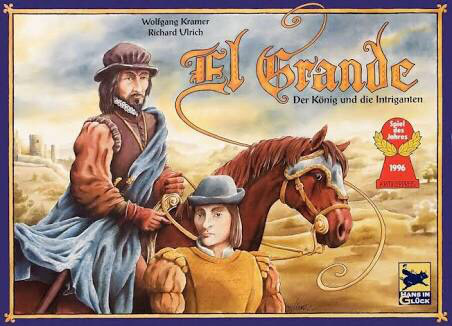
El Grande: El Grande is a game that was released in 1995, right around the beginning of the explosion of Euro games that came with Catan. I have the Big Box, which was released a couple of years ago as a twentieth anniversary release. This is an area control game. Each round starts with a bid for player order. The later you chose to go, the more meeples will be available to you. On your turn you will select one of the five available action cards which list how many meeples you can place on the map and a special skill that you can use. The idea is to use these skills to hold a majority in each region when the scoring rounds come. The game plays ok but it does feel like it has some older mechanisms. This stands to reason as it is over twenty years old. However, it does still hold up against many of the newer games currently available. I’m looking forward to including some of the expansions that came in the Big Box.
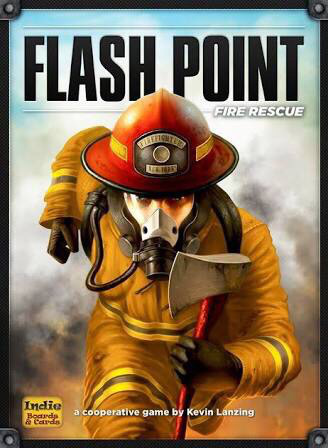
Flash Point: Though I have played Flash Point many times recently, which you can read about here and here, this was the first time that we tried the experienced rules. I didn’t want to touch them until we were comfortably beating the game with the family rules. We got eaten up. I’m not 100% convinced that we used our skills to their greatest potential, we didn’t use the fire engine, which could have put out a number of fire spaces at one time and we took the winning strategy from the easy version into this one. I don’t think that it works. There is just too much fire around to be able to ignore the victims for the first few turns.
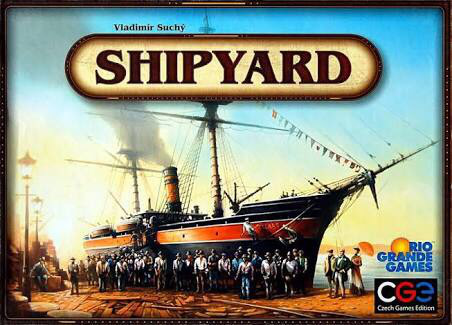
Shipyard: Shipyard has been sitting on my shelf for most of the year. This is the first time I’ve been able to get it to the table. There is a lot going on in thus game. Each player has their own player mat with the bottom portion separated into small, tile sized segments. Thus represents your shipyard. Your task is to build ships from tile pieces that can be purchased from the main board, then once you complete a ship, you take it out into your canal to be tested. You score points for how far your ship travels and what other elements are present on the ship. That is the main thrust of the game. However each turn you will move your pawn to another tile, signifying what you will do that turn. When you move your pawn, the tile it was standing on gets moved to the front of the line. You will get monies for every pawn that is in front of the position that you choose. While the main aim is to build ships, only one tile allows for ships to be built. The rest add crew, sails or other parts to the ship which will raise its value. If you can keep track of everything that you need you are likely to gain uber points.
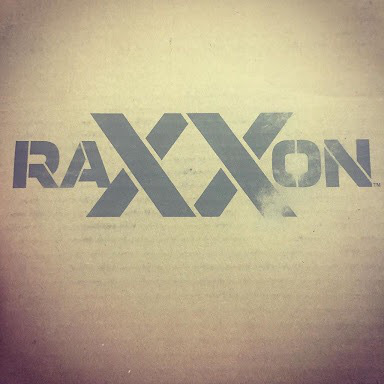
This weeks focus is on Raxxon. You will notice that there is no hyperlink on the title of this game. That is because it is not available on Amazon. You could watch my video, Gamesplained or Gamesplayed. If it does ever get released there I will put a link here. The story behind this game is that it is a prequel to Dead of Winter. In Dead of Winter, everyone is working together to survive the zombie apocalypse, though there may be someone at the table working against you. In Raxxon, everyone is working together, otherwise known as a co-operative game. You start with a tableau of face down cards that represent a crowd of people. Some of those people are infected. Each player in turn will turn a card over or use one of their skills to remove a row of healthy people, kill a zombie or remove some to the quarantine. When a skill is used, a token is added to that players board which indicates an event that will happen at the beginning of their next turn. Some of these involve more cards being moved into the crowd, adding extra infected cards to the deck or drawing a card from the Raxxon deck. This is where the game really finds it’s legs. The concept of the cards is similar to the Crossroads cards in Dead of Winter. When one is drawn, the reader looks at the first sentence, which will indicate a game state. That might be naming a character in the crowd, or asking if another card has been played. If the state of play is true, you will read on and have to make a decision. The decision will usually be between something that appears to be short term helpful but will increase the Raxxon Pharmaceutical company’s influence over the world as we know it. If their track gets to the end, meaning that they have taken control of government, everyone loses.
So the roll out of this game looks vastly different to every other game launch. The way they are selling this game is by getting your hands on a code. They released fifty copies to a small group of people and each of them got three codes which they could send to their friends. When one of the friends uses the code to get their game, they are given another three codes. So the spread of the game works like a plague. In fact on the site where you order the game, you can track where the games have gone worldwide. While Plaid Hat are the publishers, they don’t talk about the game in interviews. In fact when asked their standard response is, “I don’t know what you’re talking about”. This is such a great marketing idea that could go horribly wrong but I love it. I got to play a game while trying to get my copy. It is becoming increasingly easy to find a code, as the more copies sell, the more codes are out there.
When the game arrives, it is in a nondescript black box with Raxxon written in black writing. It feels like receiving an emergency kit that could help you. Who are Raxxon? Are they actually the cause of the zombie epidemic to start with? How do they have a “cure” so quickly? None of these questions are answered. I just know that the more of those Raxxon cards that come out, the less help it feels like I’m getting from them.
I look forward to getting this to the table with four players, as I have mentioned before, co-op games play easier with two than with four.
The other thing that this game has done is that it got me excited about the upcoming release of the new Dead of Winter expansion.
Enjoy Gaming!
Advertisements Share this:- More
